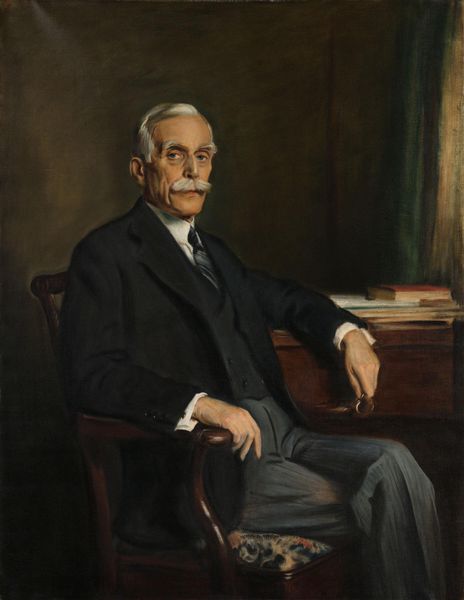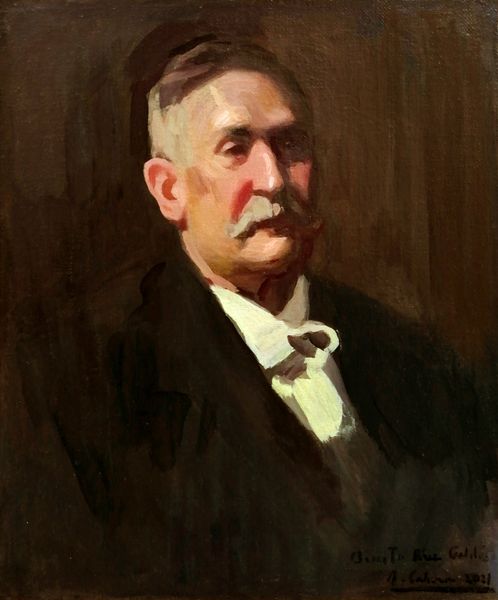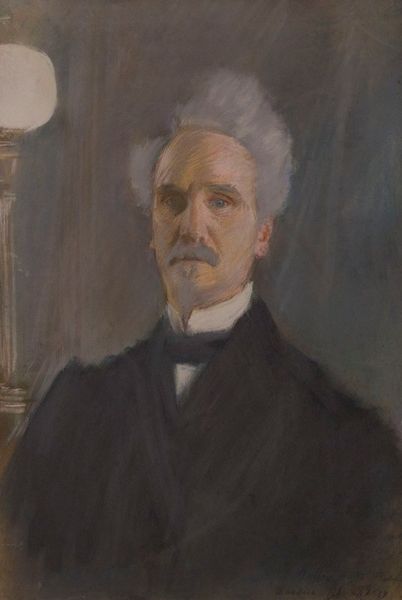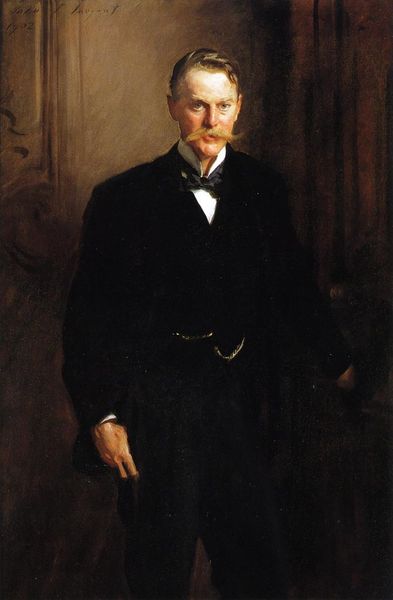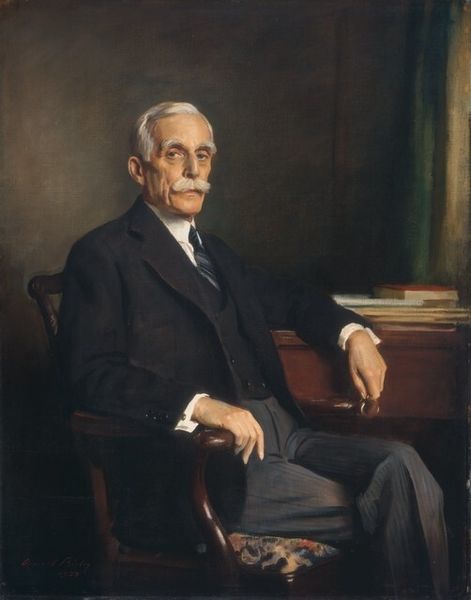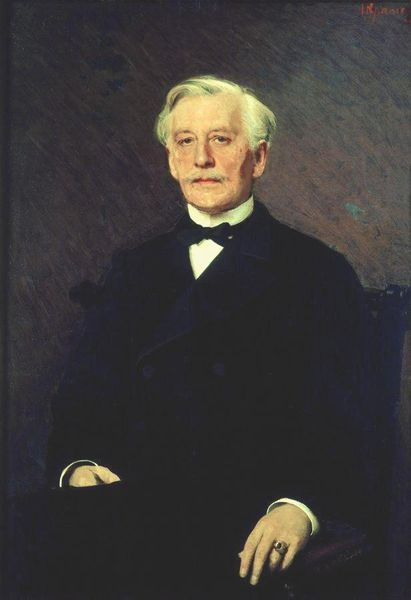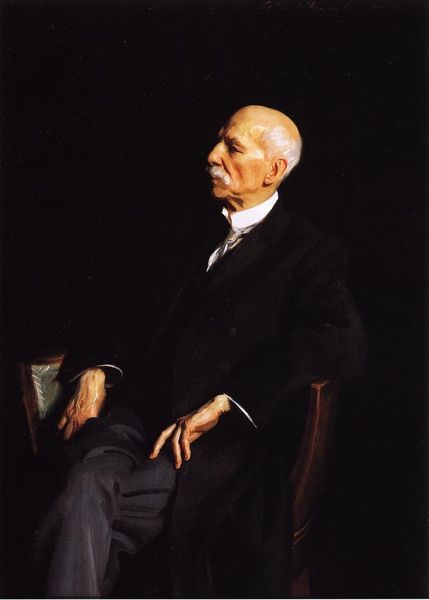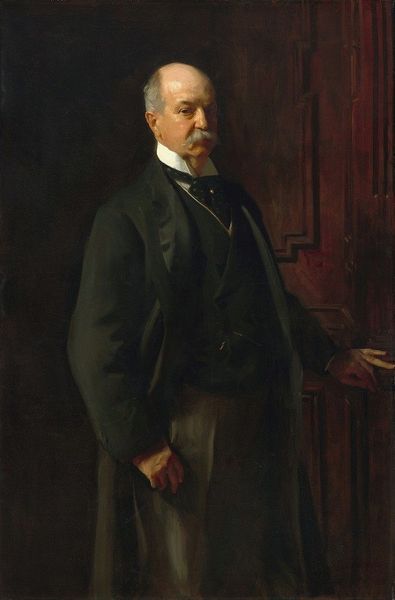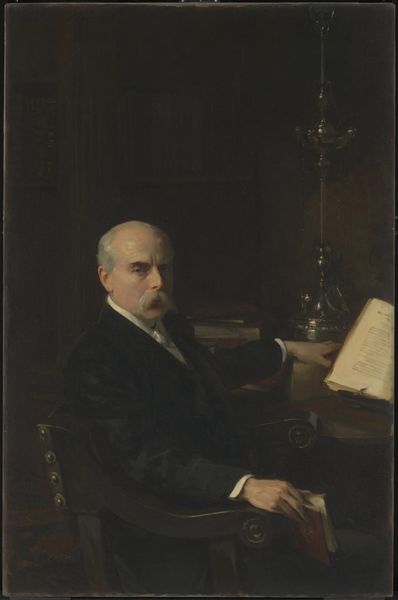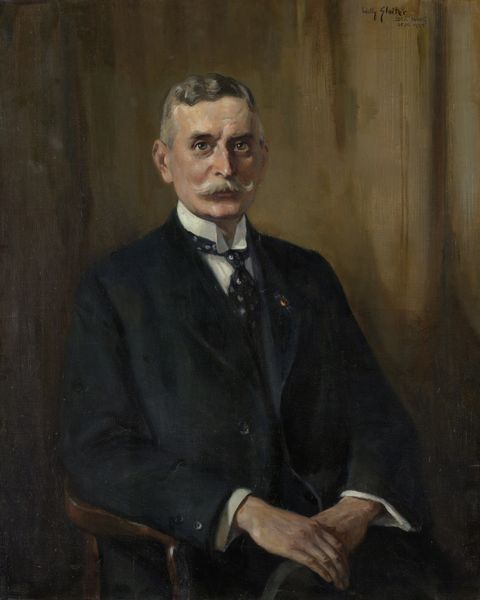
painting, oil-paint
#
portrait
#
painting
#
oil-paint
#
academic-art
#
modernism
#
realism
Copyright: Public domain
Editor: Here we have Frank Benson's "Portrait of Isaac C. Bates, Esq.," painted in 1906 using oil on canvas. The man portrayed appears stoic, almost severe. How do you read this painting? Curator: The almost monochromatic palette strikes me first. The near absence of color, focusing on shades of black, gray, and brown, throws the production choices into sharp relief. We must ask: What were the conditions necessary to acquire those materials? The pigments, the canvas, even the tailored suit of the sitter – all speak to economic and social power. Editor: That's an interesting point. I was focused on the subject, but thinking about it, obtaining all those fine materials couldn't have been simple at the time. Do you think this was intentionally showing off that access to wealth and production? Curator: Absolutely. Consider the very act of commissioning a portrait. This was an investment, a demonstration of status. The sitter, Isaac Bates, likely held significant influence, enabling his access to an artist like Benson and, further, controlling how he'd be portrayed for posterity. His hand, bearing a ring, isn't just a detail; it is a key aspect to decode social narratives around labour and ownership. How does Benson use paint to convey all this? Editor: It's subtle, but the way the light catches the ring does draw attention. The brushstrokes are so fine, it makes the overall effect very sleek and considered, implying refinement and control. Curator: Precisely! So we see that the smooth handling of oil paint itself speaks to a carefully controlled artistic process. And Benson’s labor— his time and expertise – were also commodities available for purchase. Editor: Thinking about it this way makes me realize how much the materiality informs the meaning. Thank you. Curator: A painting is never just an image; it is an object deeply enmeshed with processes of labour and systems of exchange. That lens expands the way we approach its social context.
Comments
No comments
Be the first to comment and join the conversation on the ultimate creative platform.
